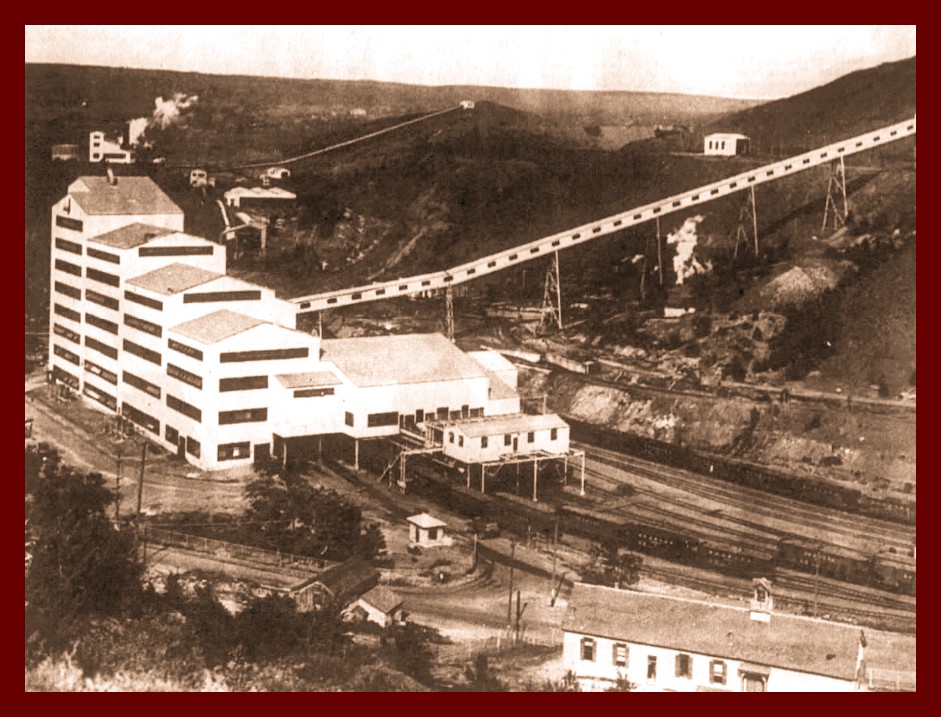This panorama of the St. Nicholas Central Breaker, opened in 1932, shows the enclosed refuse lines on the right and the Suffolk school house at the bottom right. The power plant at Maple Hill is on the upper left and the thaw shed is in the center behind the breaker.
From a series of articles that appeared in the Pottsville Republican and Herald in 1997:
The sources of raw coal for the St. Nicholas District Central Breaker were Maple Hill, Ellangowan, Knickerbocker, Suffolk, Hammond, Gilberton, Tunnel Ridge, West Shenandoah, Shenandoah City, and Mahanoy City Collieries.
The preliminary work of railroad grading, creek changes, and the removal of obstructions started April 12, 1930. Work started on the breaker August 3, 1931, and the company started operations on September 16, 1932.
One-half of the village of Suffolk was removed to build the new breaker, which was erected on the site of the old Suffolk Colliery.
Approximately 2,500 employees were used by contractors to build the breaker and more than 150,000 man-days of direct employment were provided by the construction.
A half-million cubic yards of grading was required to prepare the site for builders.
Two streams were diverted into new channels and approximately 20 miles of railroad track were laid. About 3,800 tons of structural steel and more than 10,000 cubic yards of reinforced concrete were used. A mile and a half of conveyer lines, 25 miles of conduit, 26,241 square feet of rubber belting, 118 miles of wire and cable and 20 miles of pipe were installed.
The pumps had a circulating capacity of 150,000 gallons per minute. There were several hundred motors of various types and sizes, with a total capacity of 8,000 horsepower.
The breaker was constructed in two halves. Each half could be operated independently of the other.
The capacity of the breaker was 12,500 tons per day and the site covered 500 acres over ten square miles. It was located midway between Mahanoy City and Shenandoah along Route 45 (now Route 54).
The breaker replaced all the old-fashioned colliery breakers in the district and supplied steam for a number of adjacent collieries, which eliminated the need for wasteful boiler houses.
The coal being sent to the new central breaker was first rough cleaned and crushed at each colliery cleaning plant. It was then shipped by railroad cars to the central breaker inbound storage yard, which had the capacity to hold 85 loaded standard cars.
A thaw shed for frozen coal held 18 cars during the winter months. A huge rotary dump would empty the cars to start its way up the conveyer belts for processing.
Coal entering the breaker moved at a speed of 600 meet a minute and took 12 minutes to pass through the many processes of the plant. The finished coal was then loaded into railroad cars by means of a tilting cradle-type box car loader and sent to the outbound storage yard, which had a capacity of 885 loaded cars, for shipment to the consumer.
_______________________________________________
Article by Frank Blase, Historian, Reading Anthracite Company Historical Library, Pottsville Republican & Herald, April 5, 1997. Obtained from Newspapers.com.
Corrections and additional information should be added as comments to this post.
